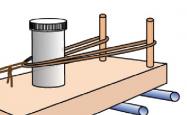This online resource investigates earthquakes.
The resource details a series of 11 full lesson plans and activities to explore and learn all about earthquakes.

This online resource investigates earthquakes.
The resource details a series of 11 full lesson plans and activities to explore and learn all about earthquakes.

This online resource deals with teaching about radiation safely in schools.
This online resource helps develop a teacher's overall pedagogy.

This online resource investigates Newton’s second law of motion.

This online resource is about being energy efficient.

This online resource investigates the implications of earthquakes.

This online resource is about artificial muscle fibres.

This online resource looks at laminar flow across an aircraft's wing.

This online resource investigates the difference between heat and temperature.

This online resource looks at the effect of mass on gravity.